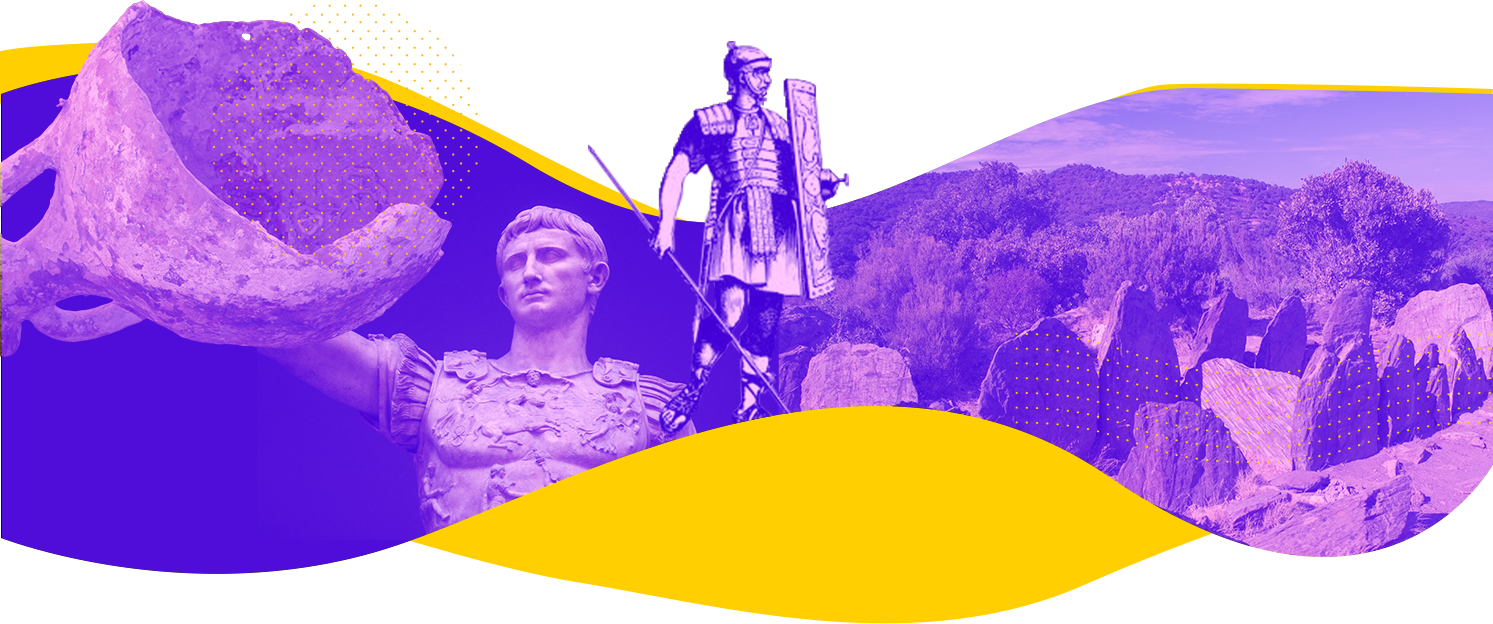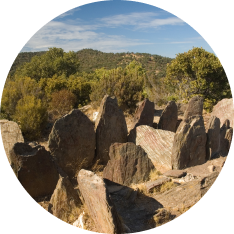


Neolithic period
-3000 BC to the 5th century AD
-2800 BC
Scattered occupations of the territory
In a protohistoric period, Bormes and the surrounding territory was only occupied by small scattered communities. Witnesses of this distant period are therefore quite rare. In the area, the Gaoutabry Dolmen is considered a place of worship and collective tombs. There are two main periods of activity: the end of the Neolithic (2800 years BC) and the beginning of the Copper Age (2000 years BC).
Entrenched camps appear in the Bronze Age (from 2700 to 900 BC), and many oppida in the Iron Age (-800 BC) from which a community can see a possible danger arriving , prepare his defense, or his escape. These positions within the forests allow direct exploitation of the resources for a rural and pastoral community. For Bormes les mimosas, any high position could have served as an oppidum: although little excavated, the sites of Cros de Carle and Constance, have not made it possible to date their periods of occupation with accuracy.
-600 BC
Provincia Romana
Colonized by the Greeks in the 6th century BC. J.-C., the territory of the current region is then part of the transalpine Roman province called Gaule narbonnaise or Provincia Romana from which derives its current name, Provence, from the Latin Provincia. It was also during this period that the Phocaeans, a tribe of ancient Greece, founded Massalia, the current Marseille. This Greek civilization, now installed on the southern part of Gaul, will influence the local Celtic population installed, and in several ways. From an artistic or material point of view, the Greeks bring the use of money, of writing.
Coming from Phocaea, a small Greek city on the Aegean Sea (current Turkey), the sailors will create several counters, including the future Massalia (Marseille), ideally placed at the very end of the Rhodanian corridor.
-400 BC
Installing the Bormani
The whole sector functions as an immense trading post, first Greek then Roman. At the very end of the sea routes are the ports, the main ones being Sète, Marseilles, Toulon. In the sector it is Olbia, at the bottom of the bay of Hyères, which deploys its unloading quay. It is by these maritime routes that olive trees and vines arrive in Provence. The many wrecks of merchant ships that dot the sandy bottoms of our coasts bear witness to intense activity.
During this period, the Celts settled on a vast territory, coming to mingle with the former occupants, henceforth forming a Celto Ligurian tribe whose rural and pastoral activities brought relative prosperity. A Ligurian tribe, the Bormani, worshipers of the God Borvo, also settled there. We can think that the name of the tribe is at the origin of the name of the village today, also suggesting that if the particle has crossed the centuries, the territory has been occupied without interruption, to finally transmit its name to us.
A few sites, such as Léoube or Le Pellegrin, are occupied by the sea. The soundings have yielded little material, essentially consisting of remains of amphorae, pieces of tiles, on the site of moderate-sized farmhouses.
1st to century AD
The Pax Romana or Roman Peace
The Romans, directing their scattered colonies around the Mediterranean, found themselves faced with an important problem. The maritime routes allowing the transport of men and goods are regularly the object of attacks by pirates and looters of various origins. They must absolutely secure the convoys and pacify the territories of Roman conquest if they want to sustain their development. This “Roman Peace” or “Pax Romana” designates a period from the 1st century to the 2nd century AD.

